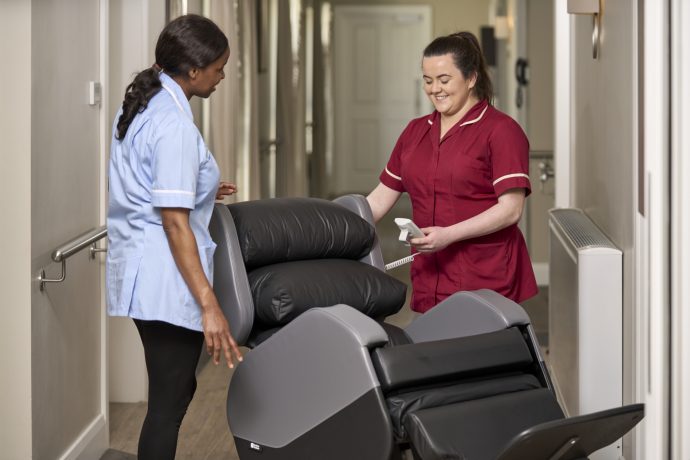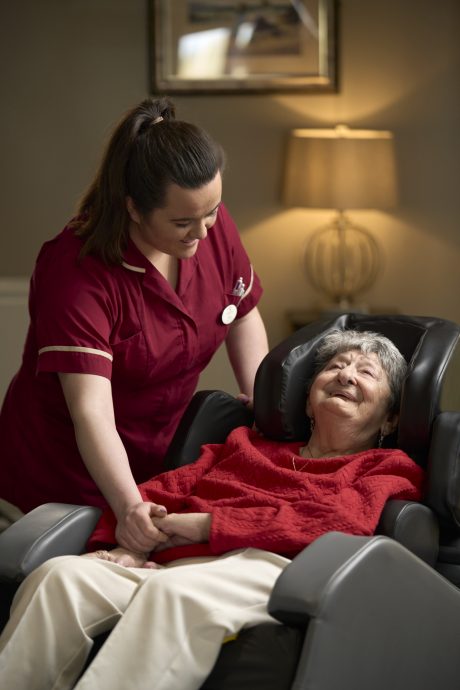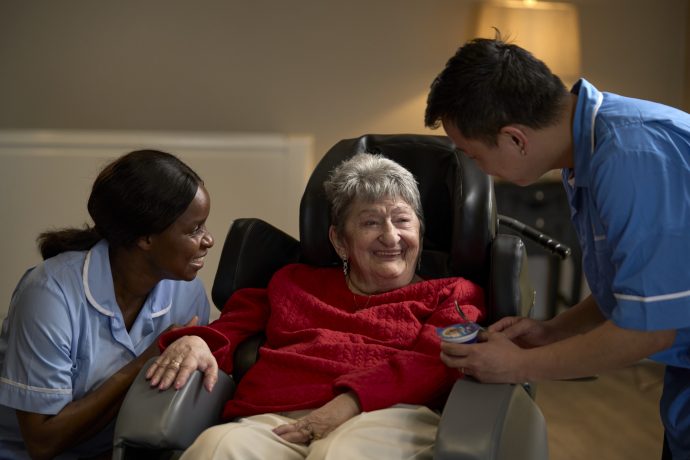
2nd September 2025
Empowering clinicians with expert-led training on clinical seating, pressure injury prevention, and best practice.
Learn More

Let our online product finder guide you through our simple steps to choose the chairs that best meet your patient’s needs.
Seating Solution FinderThe Envelo cushion provides excellent pressure redistribution and comes as standard on all Seating Matters chairs, meeting the clinical needs of most clients.
Explore Envelo RangeSeating Matters specialises in clinical, therapeutic seating solutions designed to improve patient care and safety, offering products for pressure injury prevention, postural support, and mobility assistance in healthcare settings.
Learn MoreDiscover how Seating Matters has transformed lives with our innovative seating solutions - read our inspiring customer success stories now!
Customer StoriesUsed in academia, in clinical practice and with caregivers around the world to guide their practices around specialist seating.
Download Free HandbookAdvice and guidance when seating a client with MND.

Motor neurone disease (MND) is a progressive condition that affects the motor neurons is the brain and spinal cord. Neurons are responsible for telling the muscles in our body what to do. Messages sent from the brain to the muscles gradually stop communicating which leads to muscle weakness and wastage. This can affect a person’s ability to walk, talk, swallow and breathe.1
The main four different types of MND are:
MND symptoms and speed of symptoms can vary from person to person which makes the trajectory of this condition difficult to predict.1 MND can affect the body in many ways, and people may experience symptoms at different stages of the disease.
Some of these ways are:
Approximately 5000 people are affected by MND in the UK at any one time.1 The cause of MND is still unknown, and research plays a key role in understanding this condition more, however symptoms can be managed to help the person maintain a good quality of life.2
Symptoms of MND can affect the person’s gait, muscle strength, postural control and balance, all of which can increase the person’s risk of falls.3 As the disease progresses, it may become difficult when transferring in and out of the chair. A riser recliner style chair can benefit some people with MND to facilitate a safe transfer and maintain their independence. Assistive equipment can be recommended by an occupational therapist to assist people with chair transfers and reduce their risk of falls, such as standing aid, a sit to stand aid such as Sara Stedy® or a hoist. The occupational therapist will advise the person and their caregiver on the most appropriate piece of equipment to meet the person’s needs.2
When mobility is reduced, the person may be unable to reposition themselves in bed or in a chair. This can increase discomfort and the risk of developing pressure injuries, which can be painful and debilitating. A pressure-relieving cushion helps to redistribute pressure and increase the person’s comfort when sitting. Regular repositioning is advised to maintain adequate blood flow to tissues and redistribute pressure and a tilt in space feature allows the person and their caregivers to easily change the position of the chair and redistribute weight and pressure.4 Tilt in space will also help the person maintain an optimum visual field to communicate with others and engage with their environment.

Muscle atrophy causes muscle weakness, and depending on which nerves are affected, muscles can become weak and stiff, and the person can experience painful muscle cramps.2 Shrinkage of muscles responsible for providing postural support causes the person to lose the ability to hold themselves up against gravity. This can result in secondary complications such as pressure injuries, pain and discomfort, affecting function and impacting on breathing and feeding.5
Due to the progressive nature of the condition, the chair needs to be flexible to meet the changing needs of the person and provide support to the body where needed. Postural supports and lateral back cushions help support the person to sit upright and reduce the risk of secondary complications.
The use of back angle recline can increase comfort and enable the person to be optimally positioned for feeding and to aid ventilation. Seating should be individually assessed to ensure seat width, depth, height, armrest height, leg length, and foot plate position are all correct. This will help provide support for the person with MND and increase postural support, comfort, and also reduce the risk of secondary complications.

Muscles in the neck can become weak, causing the person’s head to fall forward or to the side. This can create discomfort and pain and affect the person’s function and balance. An occupational therapist can recommend a suitable head support or cushion to help position the person’s head in a suitable position, alleviating pain and discomfort. A chair with back angle recline will assist and/or tilt in space will also help with head and neck positioning to reduce discomfort and increase function.2
Cognitive (thinking) and behavioural changes
Some people with MND experience changes in the way their brain works, due to degeneration of the frontal and temporal lobes.2 This can cause changes in cognition and behaviour. Cognitive changes that occur can be related to attention, planning and organisation, language and memory loss. Some people with MND can develop behavioural changes, which can include reduced impulsivity control, development of obsessive or compulsive behaviours or delusions and hallucinations.2 Changes in a person’s behaviour can be very distressing for the person and their caregivers so it is important to raise any concerns with your MND multidisciplinary team or your GP.
Seating for the person with MND should be assessed for the individual to meet functional, postural and pressure care needs. The seating provided should be of the correct dimensions and should fit the person’s body to ensure the chair is supportive, safe, and comfortable.
The Seating Matters Sorrento 2 and Phoenix 2 chairs are highly adjustable meaning one chair can meet the changing needs of the person with MND.


MND is a progressive disease, thus it is important to anticipate the changing needs of the person with MND. Seating Matters offers a rental service to ensure we are with you on this journey and can provide the person with the right type of care, at the right time.
An MND diagnosis can be worrying for the person and their family, but there are specialist MND clinics and centres with coordinated multidisciplinary care, and MND organisations available to offer help and support.6
At Seating Matters, our team understands the importance and urgency of having the right care, at the right time and our therapeutic seating range is clinically designed with the person and caregiver in mind, to provide the best seating solution and adding quality to life.
For more information and support, please visit;
Motor neuron disease association www.mndassociation.org
1. Motor neuron disease association (2023) ‘What is MND?’ https://www.mndassociation.org).
2. Irish motor neuron disease association (2023) ‘What is MND?’ https://www.imnda.ie/about-mnd)
3. Dharmadasa T, Matamala JM, Huynh W, Zoing MC, Kiernan MC (2018) ‘Motor neuron disease’, Handb Clin Neurol, 159:345-357, doi: 10.1016/B978-0-444-63916-5.00022-7.
4. NICE (2014) Guidelines: Pressure ulcers: prevention and management, https://www.nice.org.uk/guidance
5. Motor neuron disease NSW (2023) ‘Is MND painful?’ https://mndnsw.org.au/about-mnd
6. NICE (2016) NG42 Motor Neuron disease: assessment and management, https://www.nice.org.uk/guidance
Sign up to our mailing list to get practical tips and latest research delivered to your inbox!

2nd September 2025

15th August 2025

15th August 2025